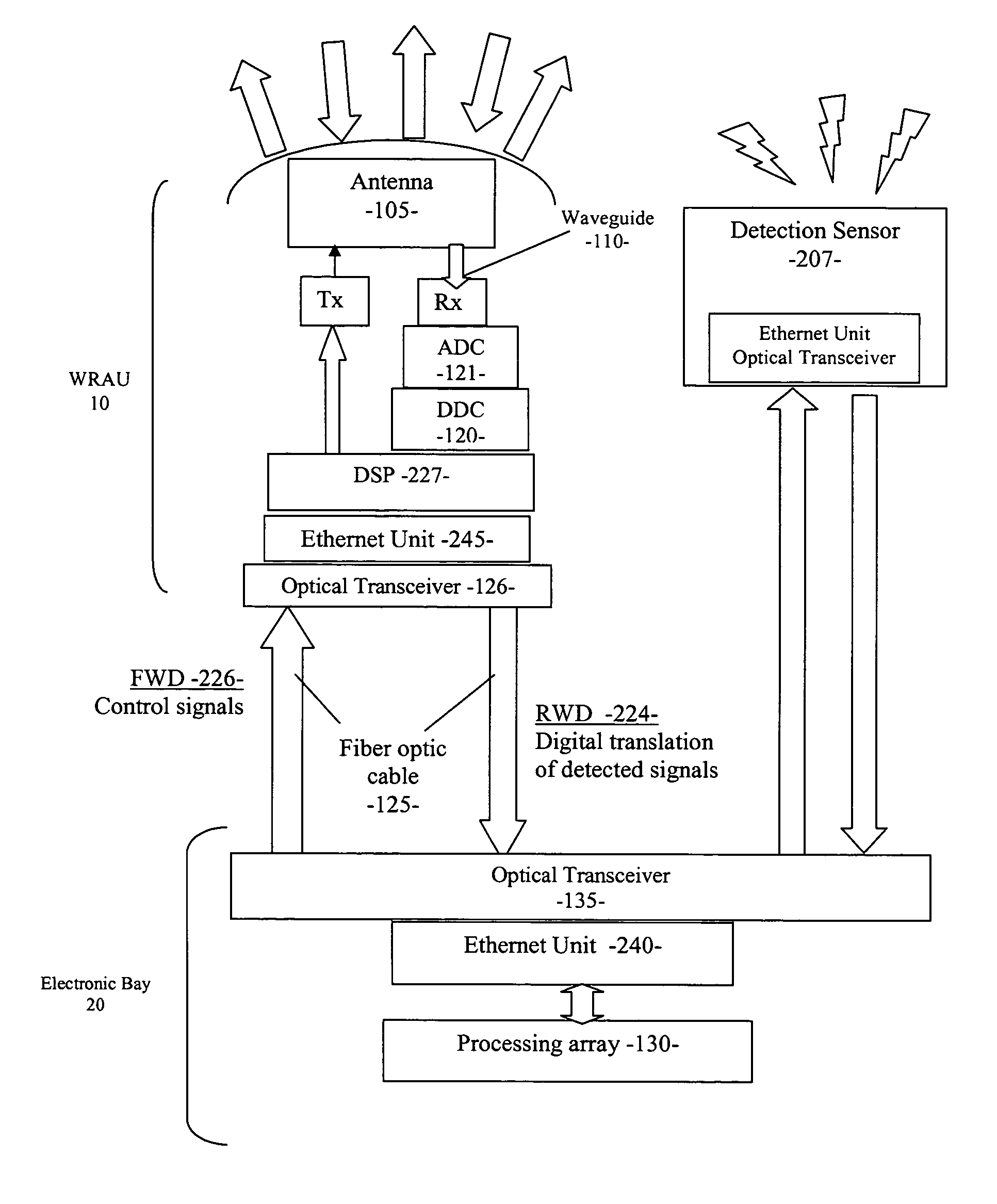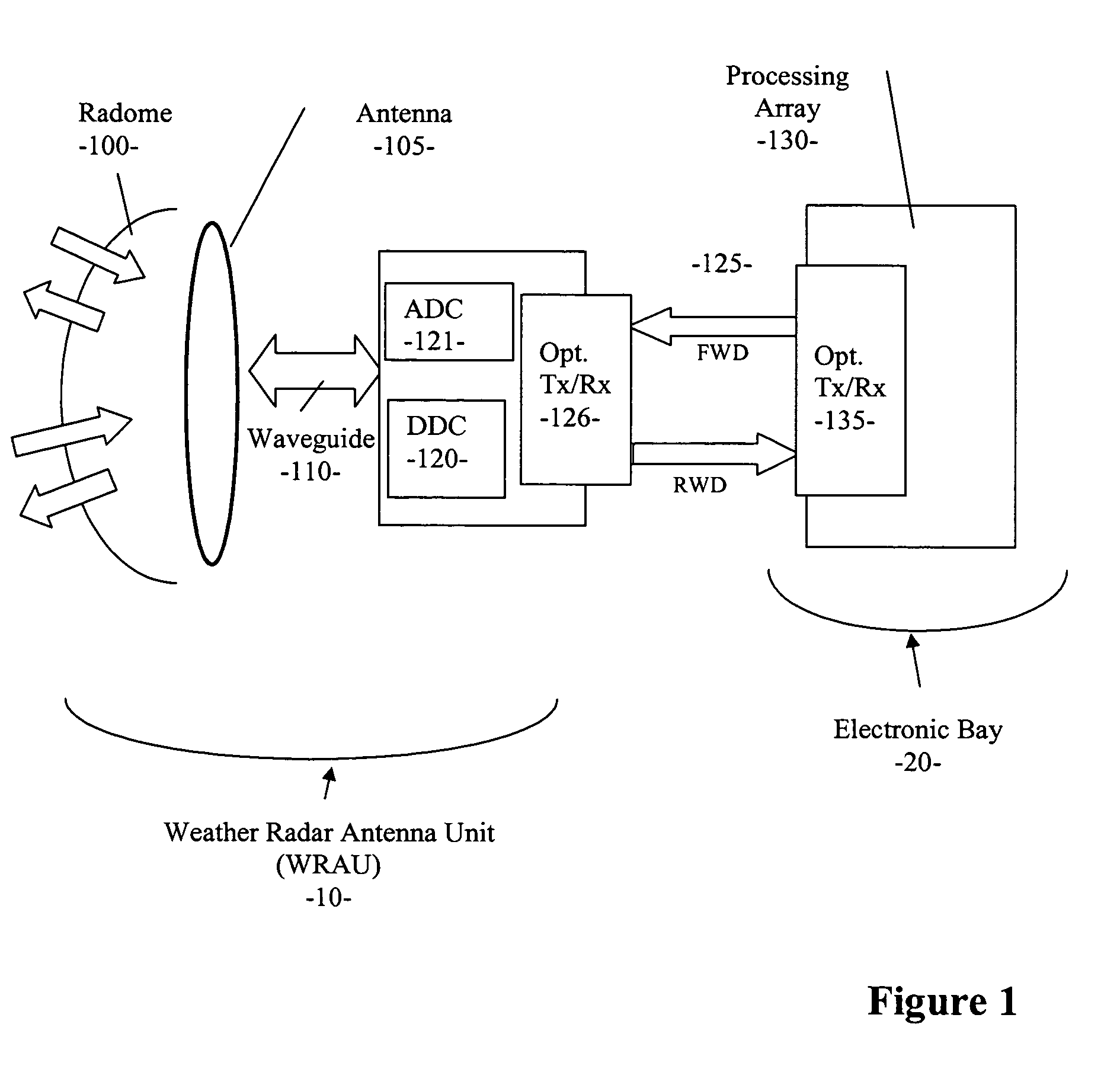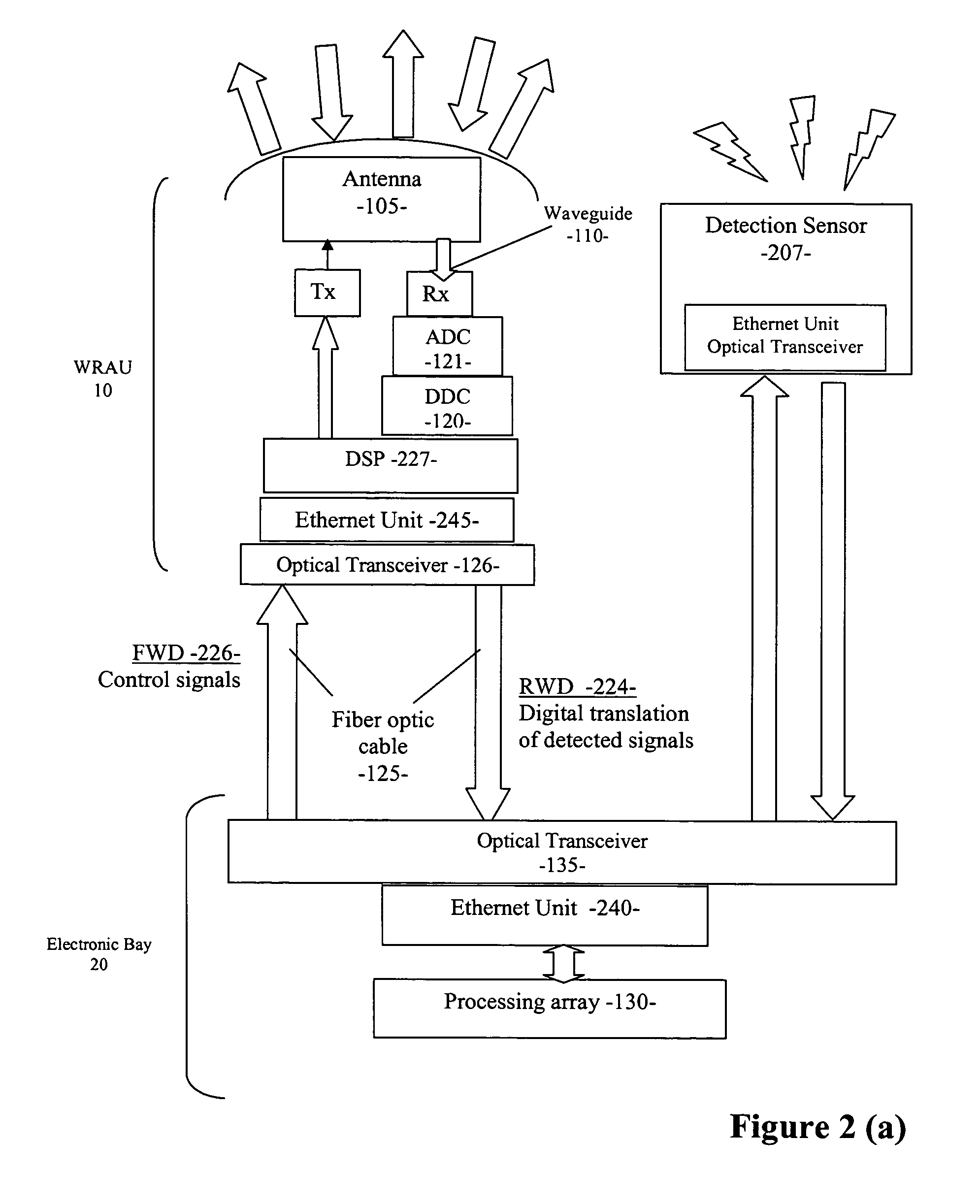Ethernet connection of airborne radar over fiber optic cable
- Summary
- Abstract
- Description
- Claims
- Application Information
AI Technical Summary
Benefits of technology
Problems solved by technology
Method used
Image
Examples
Embodiment Construction
[0016]A system and method for an Ethernet connection of airborne radar systems over a fiber optic cable link is disclosed. In the description that follows, numerous specific details are set forth in detail to provide a more thorough understanding of the present invention. It will be apparent, however, to one ordinarily skilled in the art that the present invention may be practiced without these specific details. In other instances, well-known features have not been described in detail so as not to obscure the present invention.
[0017]Reference is first made to FIG. 1, where a simplified diagram of the weather radar system in accordance with the present invention is shown. It should be noted that the simplified FIG. 1 only shows the functional blocks that are germane to the understanding of the present invention. As illustrated, an antenna unit 105 is placed inside the radome 100 at the front tip of an aircraft. A digital down-converter (“DDC”) 120 is coupled to the antenna unit 105 t...
PUM
 Login to View More
Login to View More Abstract
Description
Claims
Application Information
 Login to View More
Login to View More - R&D
- Intellectual Property
- Life Sciences
- Materials
- Tech Scout
- Unparalleled Data Quality
- Higher Quality Content
- 60% Fewer Hallucinations
Browse by: Latest US Patents, China's latest patents, Technical Efficacy Thesaurus, Application Domain, Technology Topic, Popular Technical Reports.
© 2025 PatSnap. All rights reserved.Legal|Privacy policy|Modern Slavery Act Transparency Statement|Sitemap|About US| Contact US: help@patsnap.com



